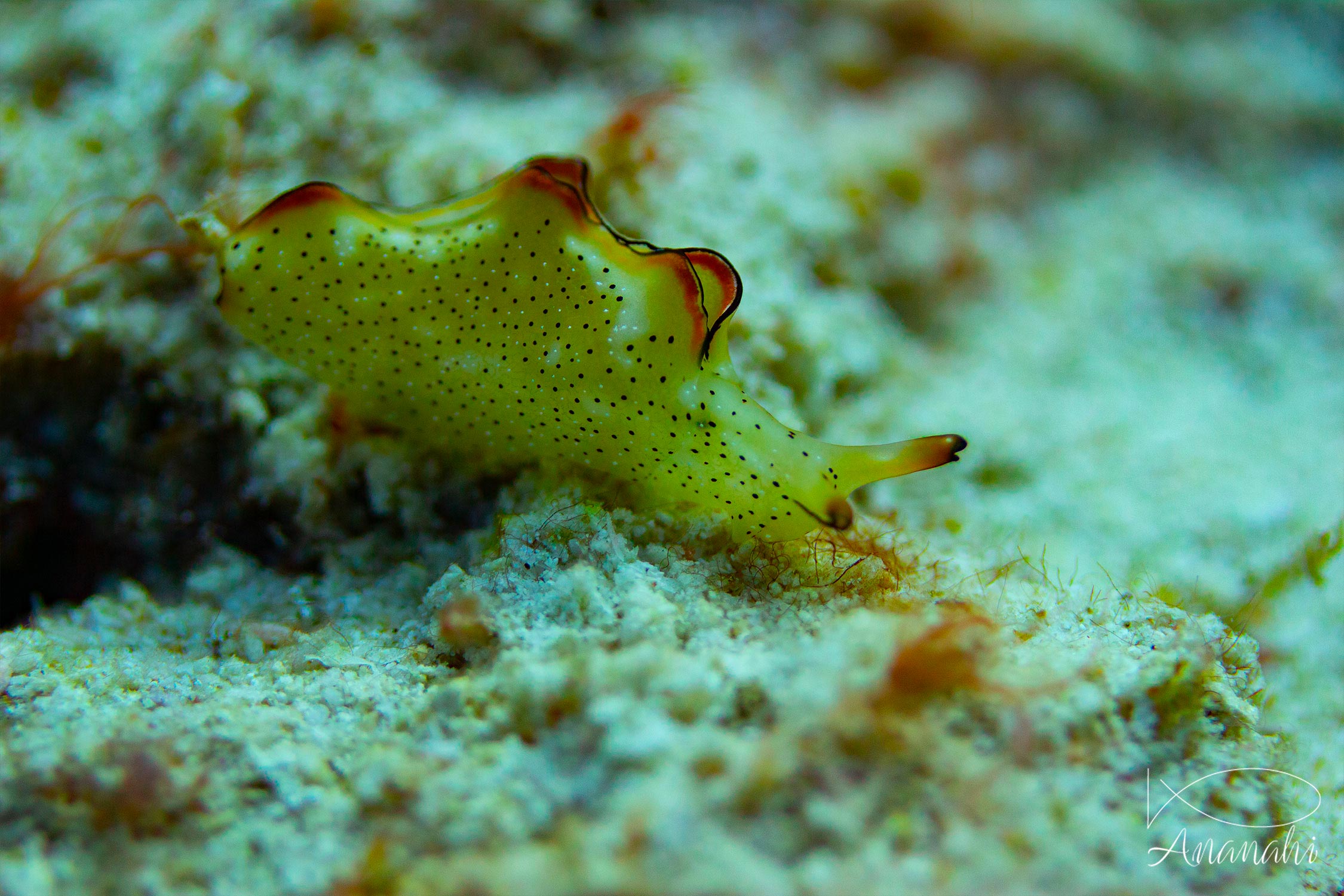
Scientific name: Aplysia punctata
Size: From 2 to 7.9 inches
Color: Green, brown or red body, white and black spots
Distinguishing feature: Two antennas at the front, the parapodia are wide and welded at the back. The body has black dots on the body and some white spots with dotted white dots.
Where did we see it: Raja Ampat

Scientific name: Aplysia punctata
Size: From 2 to 7.9 inches
Color: Green, brown or red body, white and black spots
Distinguishing feature: Two antennas at the front, the parapodia are wide and welded at the back. The body has black dots on the body and some white spots with dotted white dots.
Where did we see it: Raja Ampat
Sea hare can swim in the water using their parapodia as bird's wings.
This animal has few predators because it is able to send a cloud of purple ink when it feels endangered.
The name of sea hare comes from rhinophores that have the shape of hare ears.
Mammals have a horizontal tail.
Fishes have a vertical fin.
Parrotfish create a protective envelope around them when they are sleeping.
So, don't put the light on them during night dive to don't to wake them up and break this envelope.
The whale shark is the largest fish in the world!
Some whales are larger, but they are mammals, not fish!